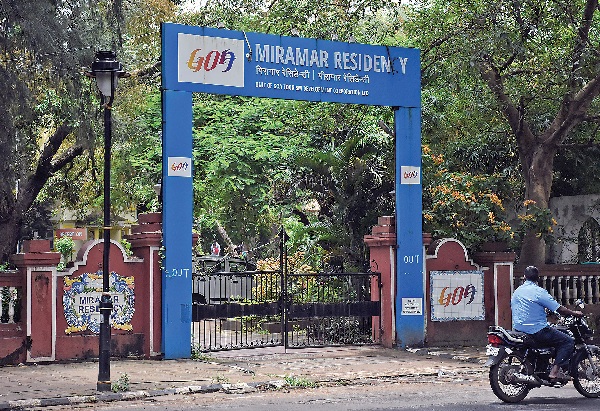In a day and age of cut-throat competition, GTDC's residencies are finding it tough to reach the mark of 65-70% occupancy. In such a situation, the only way out is to bring in private players. Plans to give Miramar Residency on license basis are in right direction, writes Karan Sehgal

At a time when more and more tourists are pouring in Goa every year, the properties owned by Goa Tourism Development Corporation (GTDC) are struggling to record high occupancy rates.
Replying to a question tabled during the monsoon session of the state assembly, Tourism Minister, Manohar ‘Babu' Azgaonkar, informed that the average occupancy of 11 residences owned by GTDC stood at just 53% in 2016-17.
In 2011-12, GTDC properties had clocked an average occupancy of 59%. Post that, the average occupancy in all the years between 2012-13 and 2016-17 has hovered around a mere 50%.
Typically, hotels in Goa keep the benchmark of 65-70%, when it comes to occupancy. In order to be sustainable, the understanding is that the average occupancy should be more than 60%.
Besides, tourists visit Goa throughout the year now and therefore hotels try hard to post around 70% average occupancy. Given this, the performance of GTDC's properties in 2016-17 appears sub-par.
The silver lining for GTDC in 2016-17 was the performance of Panaji Residency and Calangute Residency, which reported an average occupancy rate of 69% and 78% respectively.
Private hotels in Calangute are fully occupied on all long weekends and even on weekdays during the season time. Given that, Calangute Residency's 78% average occupancy in 2016-17 is at par with industry's standards.
GTDC had actually renovated its Panaji Residency sometime back. The renovation has clearly helped this residency, as its average occupancy jumped from 44% in 2014-15 to 69% in 2016-17.
But, apart from these two residencies, the average occupancy of GTDC's properties was low. Even the residencies in cities like Mapusa, Vasco and Margao posted an average occupancy of just 48%, 52% and 41% respectively in 2016-17.
Gavin Dias, general manager, hotels & marketing, GTDC, said, "These residencies are 30 to 40 years old and are due for a massive renovation. Over the years, many other properties have come up in these areas and therefore room availability has gone up, which has increased the competition."
It is true that competition in the hotel industry is really cut-throat today with the presence of several national and international brands in this space. Moreover, private hotels offer huge discounts on tariff literally triggering a price war on websites like MakeMyTrip.
GTDC, being a government organisation, will always find it difficult to match the competition in this regard. Moreover, big hospitality brands like Taj and Hyatt have huge marketing networks, which help them in getting tourists through referrals.
Perhaps, it is time for GTDC to invite private hospitality players for developing properties. In such a case, the property will continue to be owned by GTDC, while the management will be done by private players.
GTDC has followed this strategy even earlier. Replying to a question in the assembly, Azgaonkar informed that four properties owned by GTDC have been given to private players on leave and license basis.
For example, GTDC's Mollem Resort is operated and managed by M/s Dudsagar Spa and Resort. Similarly, Rest House & Cottages at Selaulim are operated and managed by Anantara Alpha Hospitality. These two are hinterland properties, which are being managed by private players on leave & license basis.
If private players show interest in hinterland properties, which have lower occupancy, there is no denying that they will be keen to take over the management of not only hinterland properties, but also of beach side properties.
For hinterland properties of GTDC at Mayem Lake, Old Goa Heritage and Farmagudi Hill Retreat, the occupancy rates stood at 42%, 48% and 45% respectively in 2016-17. Bringing private players for managing and operating properties like these will make sense.
Azgaonkar also informed that the government has taken a decision to give Miramar Residency on leave and licence. He further said that once Miramar Residency is given on lease, it will become 300-room five star grade hotel from being a 60-room property now.
It appears that the state government is moving in the direction of bringing in private players to give a fresh lease of life to GTDC's residencies.
This makes sense as it will relieve GTDC and the state government from the responsibility of managing a business. And, it will also give a better return on investment on these properties to GTDC.
Competition in the hotel industry is really cut-throat today with the presence of several national and international brands in this space
Private hotels offer huge discounts on tariff literally triggering a price war on websites like MakeMyTrip
GTDC, being a government organisation, will always find it difficult to match the competition in this regard
Big hospitality brands like Taj and Hyatt have huge marketing networks, which help them in getting tourists through referrals
It is time for GTDC to invite private hospitality players for developing properties